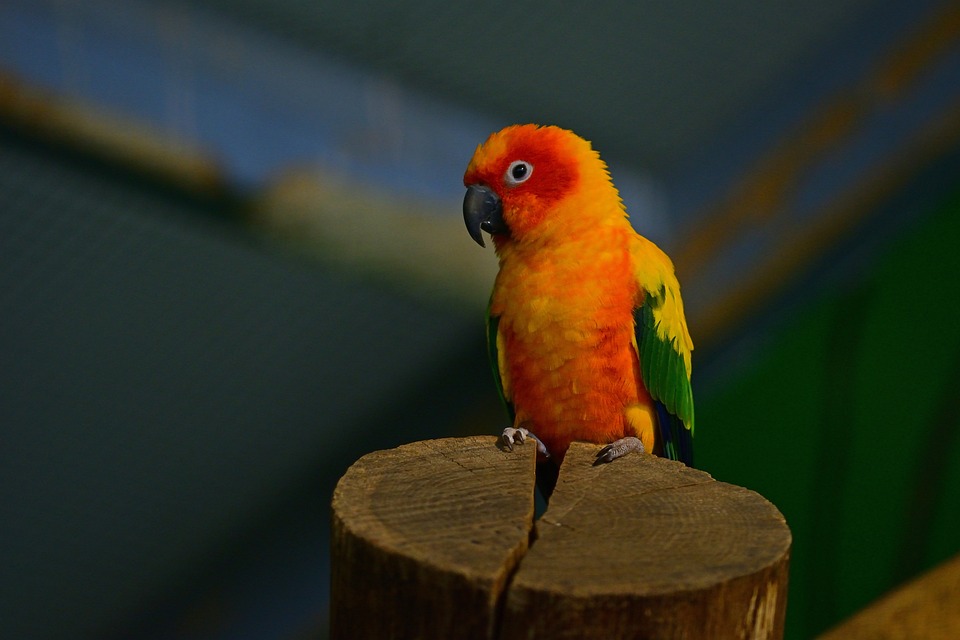Parrots are intelligent and social creatures that thrive in stimulating environments. However, many parrot owners face the challenge of training their feathered friends to adapt to new environments without fear or anxiety. In this article, we will explore the power of positive reinforcement in addressing a parrot’s fear of new training environments, providing insights, tips, and frequently asked questions to help you on your journey.
Understanding Fear in Parrots:
Parrots, being prey animals by nature, have a natural instinct to be cautious and wary of new surroundings. Fear can manifest in various ways, such as feather plucking, vocalization, aggression, or withdrawal. It is essential to approach their fear with understanding and empathy.
The Role of Positive Reinforcement:
Positive reinforcement is a highly effective training technique that rewards desirable behavior, encouraging repetition and learning. By using this approach, we can help our parrots associate new training environments with positive experiences, gradually reducing their fear and building confidence.
Steps to Address Fear of New Training Environments:
1. Start with Familiar Objects: Begin training in a new environment by introducing familiar objects from your parrot’s daily routine. This can include their favorite toys, perches, or even their food dishes. Familiarity will provide a sense of security and help ease their anxiety.
2. Gradual Exposure: Introduce your parrot to the new environment in small increments. Start with short sessions and gradually increase the duration as your parrot becomes more comfortable. This step-by-step approach allows them to acclimate at their own pace.
3. Positive Association: Use positive reinforcement techniques to create positive associations with the new environment. Reward your parrot with treats, praise, or their favorite toy whenever they display calm behavior or explore their surroundings. This will help them associate the new environment with pleasant experiences.
4. Desensitization: Gradually expose your parrot to potential triggers or stimuli in the new environment. For example, if your parrot is afraid of loud noises, start by playing low-volume recordings and gradually increase the volume over time. This method trains their tolerance and helps them overcome specific fears.
5. Consistency and Patience: Consistency is key when training parrots. Maintain regular training sessions in the new environment, providing reassurance and support. Patience is vital, as overcoming fear takes time and individual progress may vary.
FAQs:
Q1. How long does it take for a parrot to overcome fear of new environments?
A1. The time required to address fear in parrots can vary greatly depending on their individual temperament and previous experiences. It may take weeks or even months of consistent training to see significant progress.
Q2. Can negative reinforcement be used to address fear in parrots?
A2. Negative reinforcement, such as punishment or scolding, can worsen a parrot’s fear and damage the trust between you and your feathered companion. Positive reinforcement is always the recommended approach for training parrots.
Q3. What if my parrot regresses in their progress?
A3. Regression is not uncommon during the training process. If your parrot regresses, it’s essential to remain patient and consistent, re-introducing familiar objects and reaffirming positive associations. Seek guidance from an avian behavior specialist if needed.
Q4. Are there specific treats that work best for positive reinforcement training?
A4. Parrots have individual preferences, so it’s crucial to experiment with various treats to find what motivates and rewards your parrot the most. Healthy options like small fruit pieces, nuts, or specially made bird treats can be effective incentives.
Conclusion:
By implementing positive reinforcement techniques and gradually exposing your parrot to new training environments, you can help them overcome fear and develop confidence. Remember, every parrot is unique, so patience, consistency, and understanding are essential throughout the training process. Enjoy the journey of building a strong bond with your feathered companion as you work together to conquer fear.









